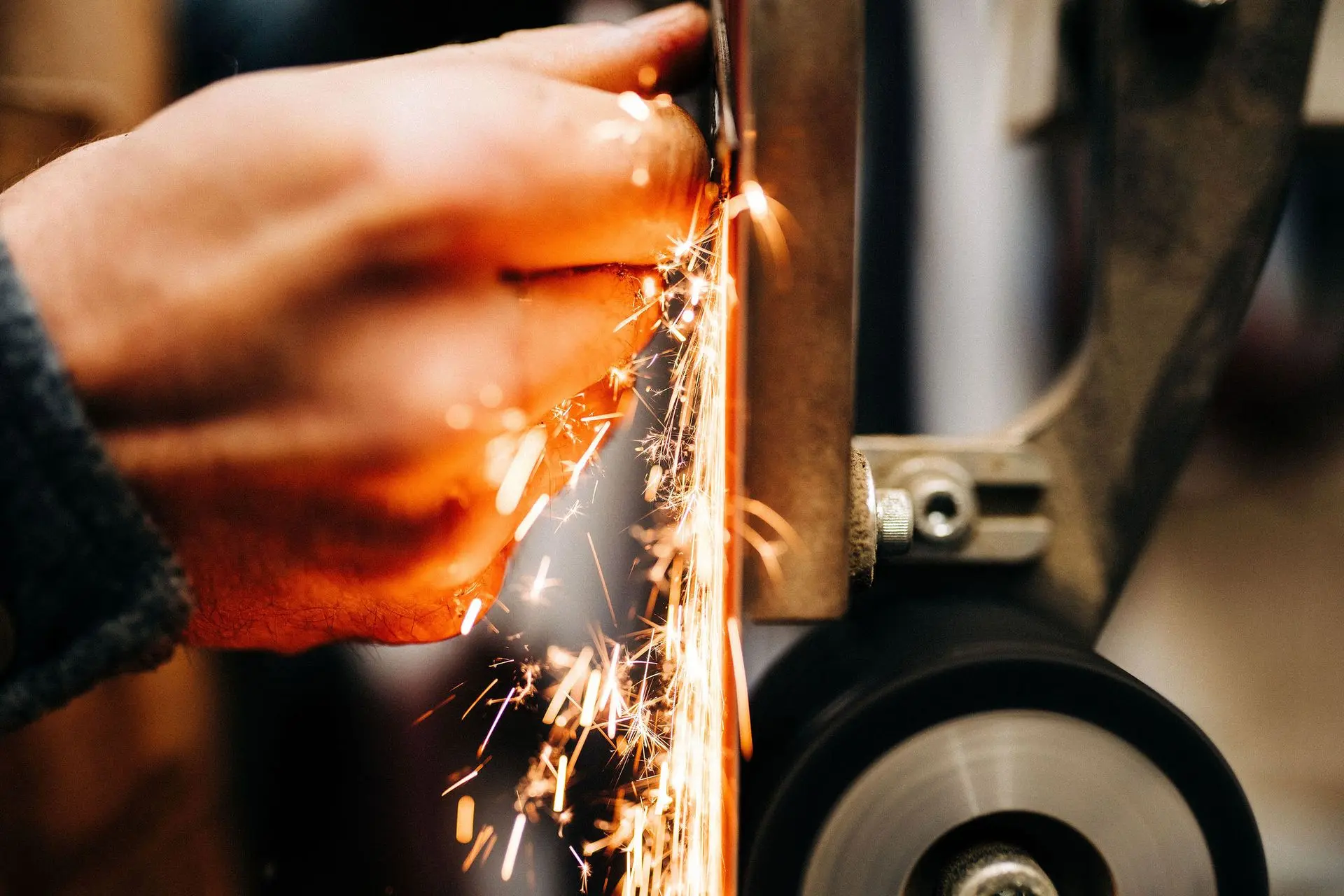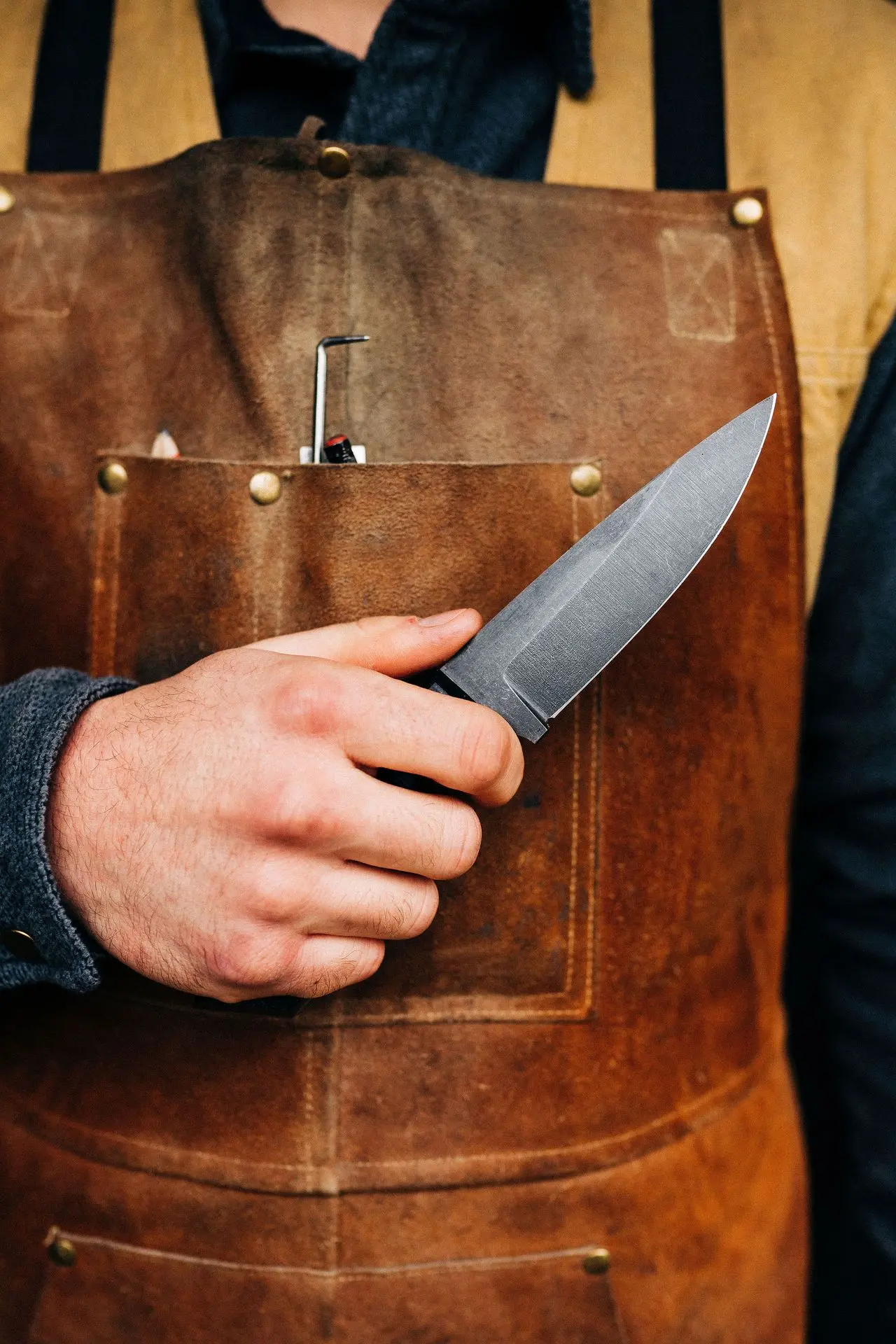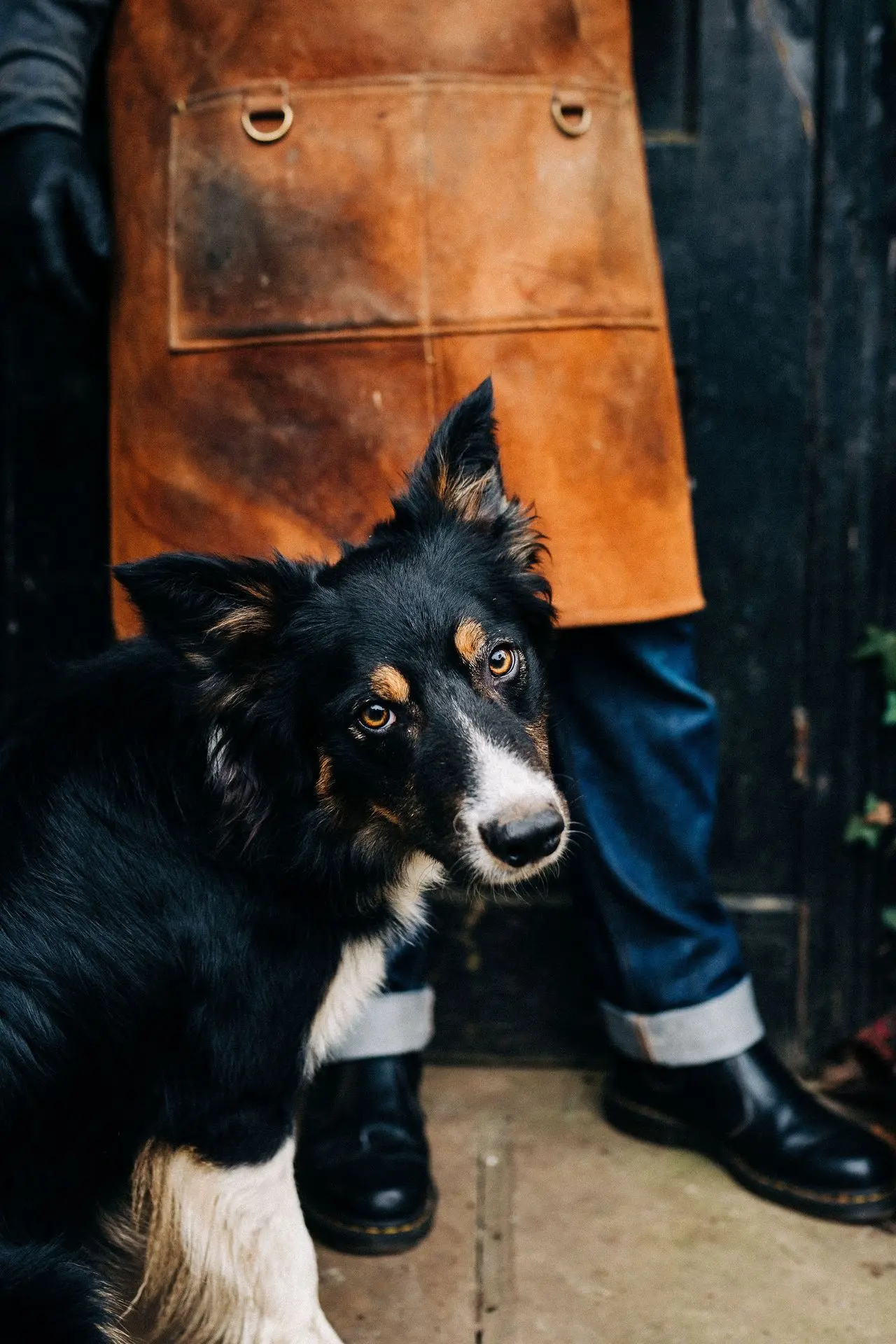The Origin of The Canton Cutler
“When a man picks up a knife, there’s an old memory from the collective unconscious that surfaces… a knife takes us back to the cave.” – Bob Loveless
It all began in the early nineties for me. I was a six or seven year old boy, taken to my father’s homeland of South Africa (having fled during the apartheid years) every year for adventures and family reconnections. Blue and yellow days exploring Table Mountain, Newlands, the Karoo, the Gauteng. Around this time, a close friend of the family, Andrew, told me he had a gift for me. Andrew had just returned from service with the South African Army. He took me into the house and presented me with an army-issued folding lock knife. A boy had never been as happy with a gift before that moment. And it was a pivotal one. Wherever I went, that lock knife was on my belt. It meant utility, adventure, readiness.
That feeling has never really left me.
Throughout my childhood and adolescence, on repeated adventures into the bos, the woods, the wild, and the kitchen, a knife was always an essential companion. The maker’s gene came from my mother, an accomplished seamstress and leather worker, and my grandfather, a bookbinder whose Muizenberg workshop smelled of coffee, tobacco, leather and brandy. That gene did not express itself until around seven years ago, when I paid an established bladesmith to walk me through making a knife. Then it began. My workshop went from a devil’s forge, some files and a hand drill, to what it is today: a modern bladesmith shop with mills, belt grinders, laser machines, pillar drills and a large kiln. My workshop is built around improving my processes, using the best materials, and endlessly pursuing what may ultimately be impossible to reach: satisfaction. Making that perfect knife. In reality, that is what keeps the maker moving. Knifemaking is simple – a series of repeatable steps until you have the end product. The hard part is producing a custom knife that feels right, looks right and works right. That is what keeps me moving.
Steel
Almost all of my knives are made from Sandvik 14C28N stainless steel. This steel hits the right compromises for me. And they are compromises, because all knife steels involve trade-offs. Damascus, for instance, favours beauty over function and heat treatment. Edge retention and 'sharpenability' sit at opposite ends of the spectrum. High-end powder metallurgy steels are excellent, but good luck sharpening them in the field. They are also expensive – and you need to use your tools.
True stainless steel is not hardenable. Carbon steels are great, but they rust and patina. So we are left with a choice. Sandvik is tough – one of the toughest stainless steels available, perfect for an EDC. It has good edge retention and corrosion resistance. In the words of Dr Larrin Thomas, who must be the only knife steel metallurgy PhD in the world, “there are always trade offs in knife steel design. But 14C28N has managed to strike a uniquely well balanced profile...”.
Before I try to persuade you I have dabbled in metallurgy myself, I will come clean. I have not. But I have read Dr Thomas’ excellent book Knife Engineering, so you do not have to.
Construction
I have been guilty of boring customers by going on about the humble Corby bolt. This expensive bolt gives a mechanical fastening between the handle scales and the tang of the knife. I use marine grade epoxy, but eventually all epoxies will perish. When that happens, a knife with pinned handle scales will simply fall apart. The scales will pop off. With Corby bolts, the mechanical fastening remains. And that is one of the reasons I stand by my lifetime guarantee, with free servicing and re-sharpening for life.
The scales are drilled to 1/4 inch, with a 3/16 inch shoulder – the same size as the hole in the tang. The bolts are placed into the scales, epoxied, then clamped and screwed under pressure. These are then ground flush. Just lovely.
My preferred handle material is Micarta. Layers of linen, paper or hessian are stacked, impregnated with epoxy and heated. It produces a completely inert, waterproof and natural-feeling material with a beautiful grain. It is the superior knife handle material.
As for grind profile, it will not surprise you that I have a strongly held view on the “scandi grind” popularised by many well-known knife brands. I am a reasonably accomplished knifemaker, and even I cannot maintain a good edge on a scandi-ground knife. A full flat grind with a secondary bevel is simply the most versatile edge profile out there. It is easy to sharpen in the field, and useful for more than just carving wood.
Cost
A knife sat in a drawer is no good to me, and no good to you either. This brings me back to finish. My favourite surface finish is sandblasted, etched and stonewashed. I will argue with anyone that there is no more durable finish for a cutting tool. Cerakote lasts as long as you do not use it. DLC is great but will eventually wear. A satin finish cannot be refinished once the scales are on.
One of the satisfactions I get from my free servicing promise is when a knife comes back scratched and battered – often from somewhere sandy and salty, if you get my gist. I tape the scales up, re-blast, re-etch and re-stonewash, and it goes back out looking as good as it did when it was first made. That is where my customers can have confidence in use. Do not leave it sat in a drawer.
So let us get to cost. My least favourite aspect of knife making. A £2000 knife comes with £2000 problems. I want my tools to be accessible. Accessible, durable and used. I keep my pricing as low as I reasonably can. I have great respect for the many makers producing more expensive knives than I do. But my focus is keeping prices down. I am not an artist, and I do not make art pieces. I make tools. You are paying a fair price for something that will last. And if it doesn’t, I’ll replace it.
Ethos
Distilling my ethos on paper is difficult. Fit, finish, form and function are the four terms I hold on to. The bespoke knife must fit together – the scales, bolts and guard must transition into each other with no gaps, ingresses or indiscretions. The finish must be consistent and clean. The form must be right – simple, with flow from handle to blade – and it must sit comfortably in your hand, whatever the task. And then there is function. This is the harder part. The knife must be useful. The goal is to make a knife that belongs on every belt, in every pocket and every kitchen. That is a never-ending journey.
In essence, I want to make a knife that sits on your belt, or in your kitchen, and is there for you whenever you need it.
As a maker, I feel part of the journeys my tools go on. There is very little more satisfying than that.
Jake
(with Griff)


